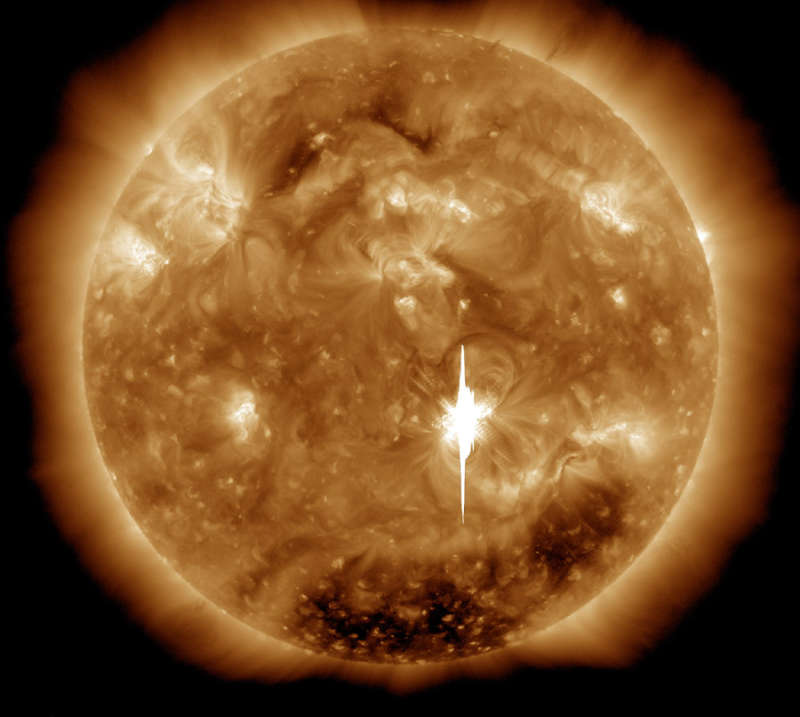Explanation: On Valentine's Day (ET) the Sun unleased one of its most powerful explosions, an X-class flare. The blast was the largest so far in the new solar cycle. Erupting from active region AR1158 in the Sun's southern hemisphere, the flare is captured here in this extreme ultraviolet image from the Solar Dynamics Observatory (SDO). The intense burst of electromagnetic radiation momentarily overwhelmed pixels in SDO's detectors causing the bright vertical blemish. This X-class flare was also accompanied by a coronal mass ejection (CME), a massive cloud of charged particles traveling outward at nearly 900 kilometers per second. Skywatchers at high latitudes should be alert for aurorae tonight.
1999 2000 2001 2002 2003 2004 2005 2006 2007 2008 2009 2010 2011 2012 2013 2014 2015 2016 2017 2018 2019 2020 2021 2022 2023 2024 2025 |
Yanvar' Fevral' Mart Aprel' Mai Iyun' Iyul' Avgust Sentyabr' Oktyabr' Noyabr' Dekabr' |
NASA Web Site Statements, Warnings, and Disclaimers
NASA Official: Jay Norris. Specific rights apply.
A service of: LHEA at NASA / GSFC
& Michigan Tech. U.
|
Publikacii s klyuchevymi slovami:
Sun - solar flare - coronal mass ejection - ultraviolet - Solnce - Solnechnaya vspyshka - koronal'nyi vybros - Ul'trafioletovoe izluchenie
Publikacii so slovami: Sun - solar flare - coronal mass ejection - ultraviolet - Solnce - Solnechnaya vspyshka - koronal'nyi vybros - Ul'trafioletovoe izluchenie | |
Sm. takzhe:
Vse publikacii na tu zhe temu >> | |
